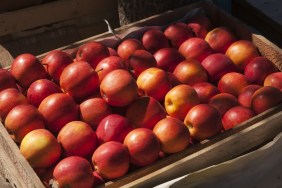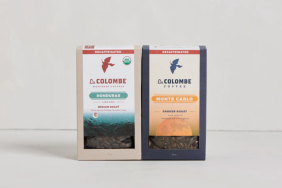If you follow any foodies on social media, you’ve surely started to see baobab powder sprinkled throughout your feed. But if your only exposure to baobab comes from The Little Prince — and doesn’t exactly conjure images of a balanced breakfast — you may be wondering what’s up with this foreign fruit. With major points for its exotic nature, baobab is poised to be the next acai, but before we crown it with official superfood status, let’s dig in and get the scoop on this potent powder.
What Is It?
The secret’s out on “Africa’s best-kept secret.” The pod-shaped fruit of the baobab tree boasts a tangy citrus flavor described as sour mango lemonade or “somewhere between grapefruit, pear and vanilla.” The velvety, coconut-size fruit is sometimes called monkey bread because of its naturally chalky, flour-like texture, which means that it doesn’t require any processing or dehydrating to turn it into the powdered form you see at Whole Foods.
What Does It Do for You?
Like any new superfood star, baobab fans have been quick to hail it as a miracle elixir and its nickname, the “Tree of Life,” seems like a pretty solid endorsement for its health-boosting qualities. Used in traditional African medicine to treat ailments, from upset stomach to malaria, Western medicine has only recently begun to take a look at the fruit powder’s nutrient profile. Baobab’s biggest claim to fame is its off-the-charts levels of vitamin C, which enhance the immune system and contribute to beautiful skin. Because baobab is half dietary fiber (about five times more than an apple), the fruit may help those with tricky tummies maintain healthy digestion.
Baobab also ticks the boxes for tons of minerals, including iron for healthy blood, energy-boosting magnesium, more potassium than bananas or avocados and more calcium than milk or spinach. Baobab is high in polyphenols, which some believe help to turn back the clock on aging, but are also known to slow the glycemic response, which means the cure-all fruit may even be beneficial in treating diabetes. And because you can’t talk about a superfood without talking about antioxidants, baobab has an arsenal of antioxidants, which beats out that of pomegranates, goji berries, blueberries and yes, even acai.
Where Does It Come From?
When you hear that climate change-resistant baobab trees can grow for more than 500 years, the idea of harvesting their fruit for your smoothie may make you as queasy as the thought of making ancient redwood part of your balanced breakfast. But increasing the value of baobab fruit not only encourages local communities to protect the trees, but can also be an amazing source of revenue for struggling rural villages. Ethical and organic baobab powder brands like Aduna, Organic Burst, powbab and others are creating partnerships that have the potential to bring jobs to 2.5 million households across baobab-producing countries.
How Do You Use It?
In Zimbabwe and other African countries where the tree grows, the powder has long been used by locals to make a refreshing drink, candy, porridge and even alcohol. You can use it to add a flavorful punch of nutrition to smoothie bowls, pack more fiber into pancakes or muffins, up the vitamin content of a post-workout juice, thicken delicious raw desserts, garnish your granola or even as a zesty cocktail twist.
With its impressive antioxidant credentials, inspiring story of sustainability and limitless uses (at least according to all the home chefs on Pinterest), the possibilities for baobab powder are as endless as the stream of new superfoods. We say, keep ’em coming.








